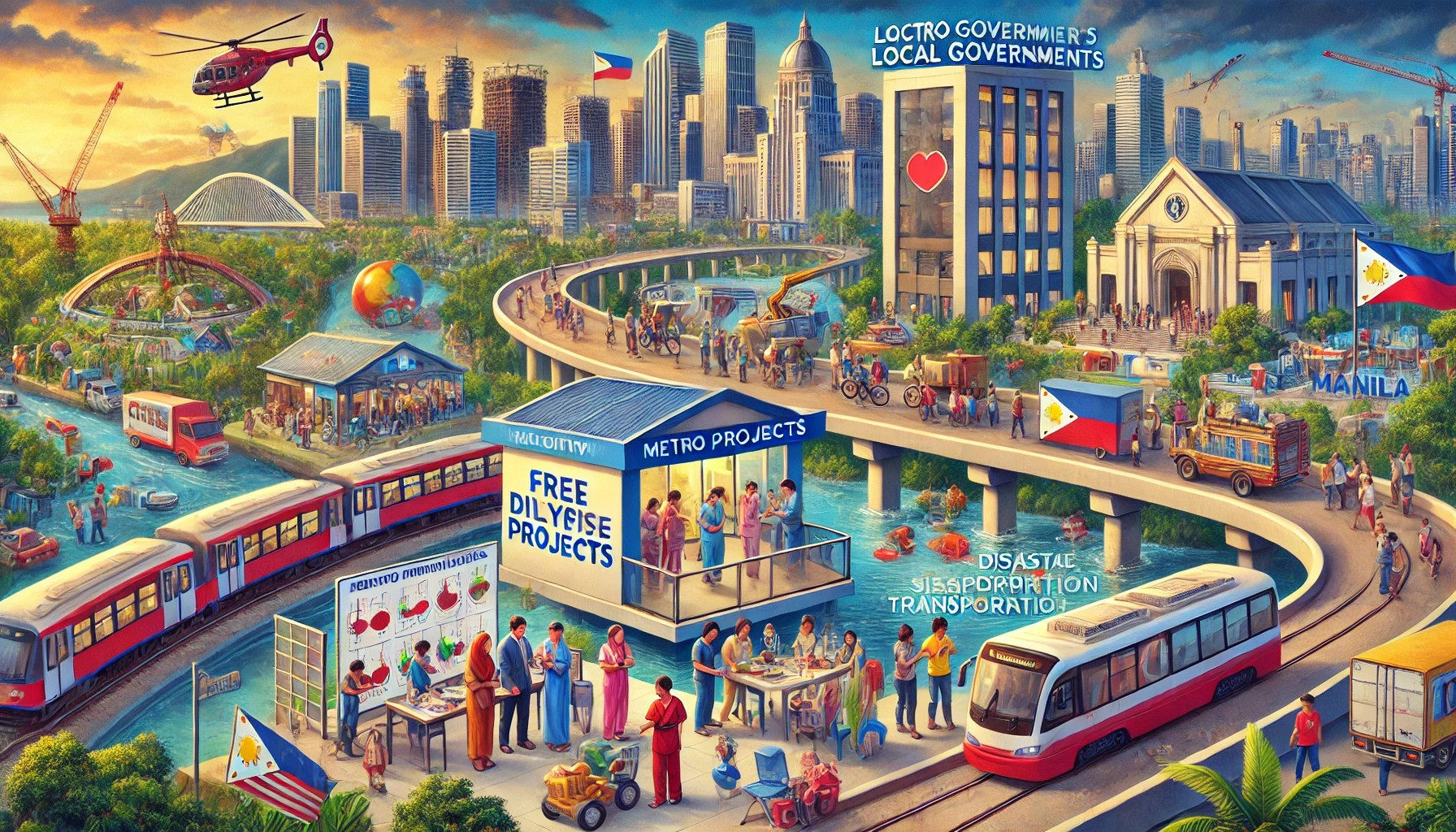Metro Manila’s Local Governments Focus on Community and Infrastructure
Metro Manila’s local governments have recently implemented a variety of initiatives aimed at improving community welfare and infrastructure across the region.
Caloocan City, under the leadership of Mayor Along Malapitan, has been actively addressing both social and infrastructure needs. In response to a recent fire incident in Barangay 57, the city provided relief aid to affected families, demonstrating solidarity and support for those in crisis. On the infrastructure front, the city is constructing three multi-purpose buildings in various barangays, intended to serve as community centers and facilities for public use. This move is part of a broader strategy to enhance the quality of public spaces and services.
In Makati, Mayor Abby Binay has focused on healthcare and social services. The city has provided nearly 9,000 patients with free chemotherapy sessions and has offered unlimited dialysis treatments to over 19,000 residents through the Makati Yellow Card program. These healthcare initiatives are supported by the city’s strong fiscal management, which saw it reach 80% of its revenue target for the year by April, ensuring continued support for such critical services.
Additionally, the city has made strides in other areas, such as public safety and community support. The inauguration of new police and fire stations enhances the city’s emergency response capabilities, while ongoing programs support residents’ overall well-being.
Pasig City’s approach to housing is particularly notable for its focus on fairness and community support. The city has pledged that no resident will be relocated until adequate housing with necessary amenities is secured. This policy reflects a deep commitment to social justice and the well-being of vulnerable populations.
Mayor Vico Sotto’s administration has been transparent about the challenges and limitations of the city’s housing capabilities, focusing on realistic and sustainable solutions. This approach aims to prevent the displacement of residents and ensure that new housing developments are well-integrated into the community infrastructure.
Quezon City is taking proactive steps in disaster preparedness, particularly in light of the approaching La Niña season. The city’s Disaster Risk Reduction and Management Council has been instrumental in preparing for potential natural disasters, ensuring that resources and plans are in place to protect residents.
The city is also enhancing accessibility for people with disabilities by installing tactile pavers along key roads, an initiative that aligns with broader efforts to make the city more inclusive and navigable for all residents.
Pasay City’s “Libreng Sakay” program, providing free public transportation, continues to be a critical service for many residents. This initiative, supported by Toyota Motors Philippines, not only eases transportation costs for daily commuters but also reflects a broader commitment to public welfare.
In addition to transportation, Pasay is actively promoting youth engagement through recreational projects like the new skateboarding park. These initiatives aim to provide safe and structured environments for young people to engage in physical activity and community building.
These diverse initiatives across Metro Manila highlight the region’s commitment to improving public services, infrastructure, and community welfare, ensuring a better quality of life for its residents.

